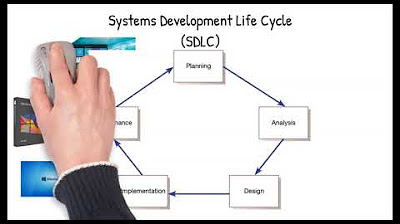Sub Topic 2
Summary
TLDRIn this instructional video, the speaker discusses the end-to-end application development process, highlighting the importance of planning, design, development, integration, testing, and maintenance. Key concepts include creating a Minimum Viable Product (MVP) to address user needs and the role of rapid prototyping. The speaker emphasizes the significance of using version control systems like Git for efficient collaboration among team members, allowing parallel development and conflict resolution. This comprehensive overview serves as a guide for aspiring developers to understand the critical stages and tools necessary for successful application development.
Takeaways
- 😀 Thorough planning and analysis are essential before starting any application development project.
- 🖌️ The design phase focuses on creating an engaging user interface (UI) and enhancing user experience (UX).
- 💻 Frontend development typically utilizes HTML, CSS, and JavaScript for creating interactive interfaces.
- 🔧 Backend programming can involve languages like Python and PHP, focusing on server-side functionalities.
- 🔗 Integration of frontend and backend is crucial to ensure seamless communication through APIs.
- ✅ Rigorous testing is necessary to ensure that all application features function correctly before launch.
- 🔄 Post-launch maintenance is vital for addressing bugs and improving features based on user feedback.
- 🤝 Collaboration among team members can be enhanced using version control systems like Git.
- 📝 Version control allows for tracking code changes, managing project history, and resolving conflicts efficiently.
- 📊 A comprehensive understanding of the end-to-end development process is key to successful software projects.
Q & A
What is the main purpose of developing a Minimum Viable Product (MVP)?
-The main purpose of developing an MVP is to create a product that meets essential user needs and allows for quick market entry, enabling feedback and iterations.
What does end-to-end development encompass?
-End-to-end development encompasses the entire software creation lifecycle, including planning, analysis, design, development, integration, testing, deployment, and maintenance.
Why is planning and analysis crucial in application development?
-Planning and analysis are crucial because they involve gathering requirements, understanding user goals, and identifying essential features, which ensure the application is effectively targeted to meet user needs.
What are the key components of the design phase in application development?
-The design phase includes creating a user interface (UI) and user experience (UX) that are intuitive and engaging, as well as planning the application's architecture and selecting appropriate technologies.
What technologies are commonly used in frontend development?
-Common technologies used in frontend development include HTML, CSS, and JavaScript, which are essential for creating interactive user interfaces.
What is the importance of integration and testing in the development process?
-Integration and testing are important because they ensure that the frontend and backend components work together seamlessly, and that all functionalities operate as intended before launching the product.
What should be done after the application is launched?
-After launch, maintenance is necessary to identify and fix bugs, improve features based on user feedback, and ensure the application remains stable and performs well.
How does version control facilitate collaboration among developers?
-Version control facilitates collaboration by allowing multiple developers to work on different features simultaneously, tracking changes, managing conflicts, and providing a history of modifications for easier code management.
What are some popular version control systems mentioned in the presentation?
-Popular version control systems mentioned include Git, GitLab, and Bitbucket, with Git being the most widely used.
What steps are involved in the collaboration process using version control?
-The collaboration process involves initializing a project by creating a repository, developing features in parallel, creating branches for individual work, and merging completed features back into the main branch through pull requests.
Outlines

Esta sección está disponible solo para usuarios con suscripción. Por favor, mejora tu plan para acceder a esta parte.
Mejorar ahoraMindmap

Esta sección está disponible solo para usuarios con suscripción. Por favor, mejora tu plan para acceder a esta parte.
Mejorar ahoraKeywords

Esta sección está disponible solo para usuarios con suscripción. Por favor, mejora tu plan para acceder a esta parte.
Mejorar ahoraHighlights

Esta sección está disponible solo para usuarios con suscripción. Por favor, mejora tu plan para acceder a esta parte.
Mejorar ahoraTranscripts

Esta sección está disponible solo para usuarios con suscripción. Por favor, mejora tu plan para acceder a esta parte.
Mejorar ahoraVer Más Videos Relacionados

Chapter 1: The Systems Development Environment

What is Automated Testing?

Software Testing Explained in 100 Seconds

How do you make a web application? | Software Development Life Cycle

Introduction To Software Development LifeCycle | What Is Software Development? | Simplilearn

Perbedaaan Model Desain Pembelajaran dengan Model Pembelajaran
5.0 / 5 (0 votes)
